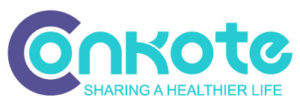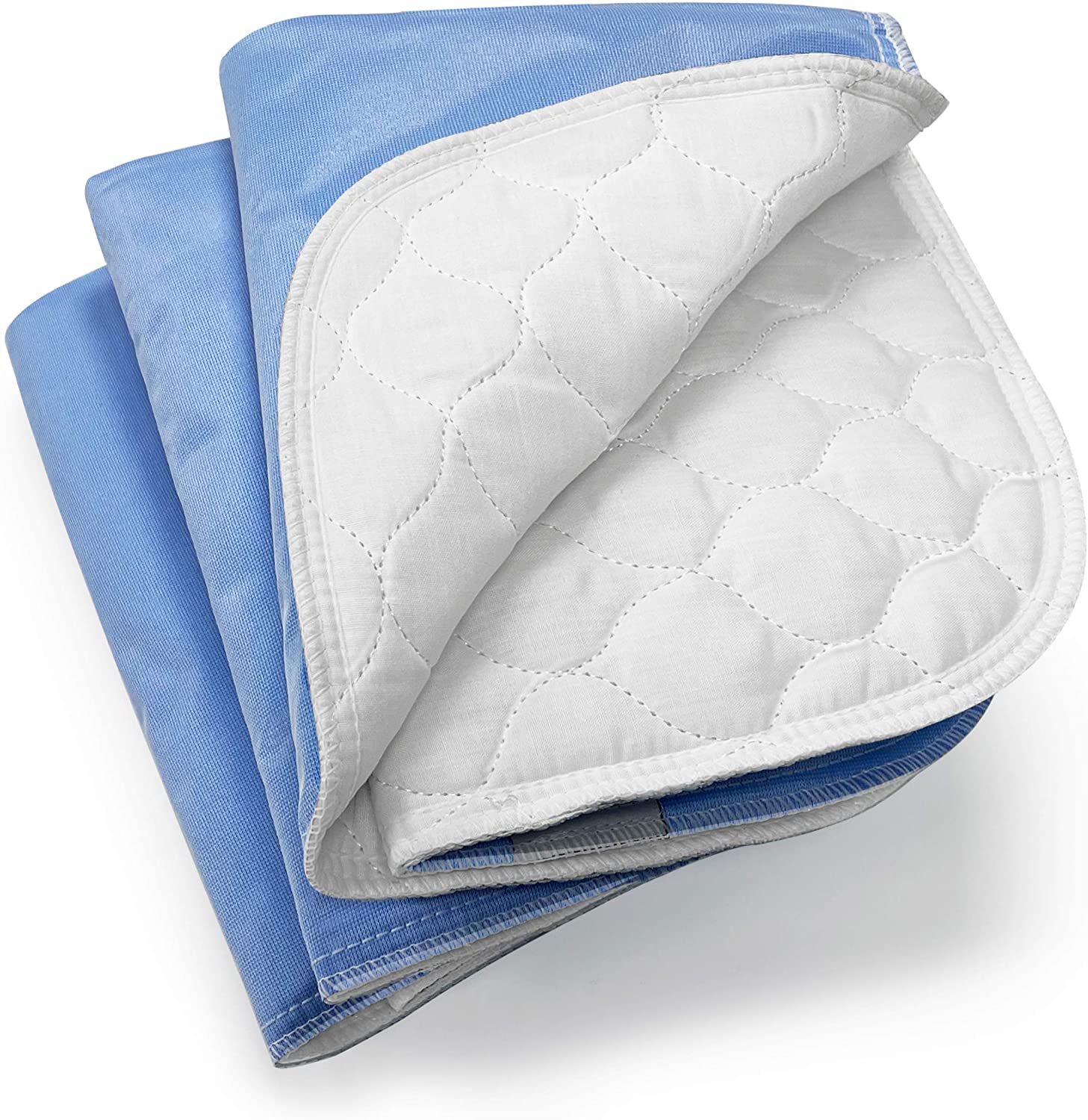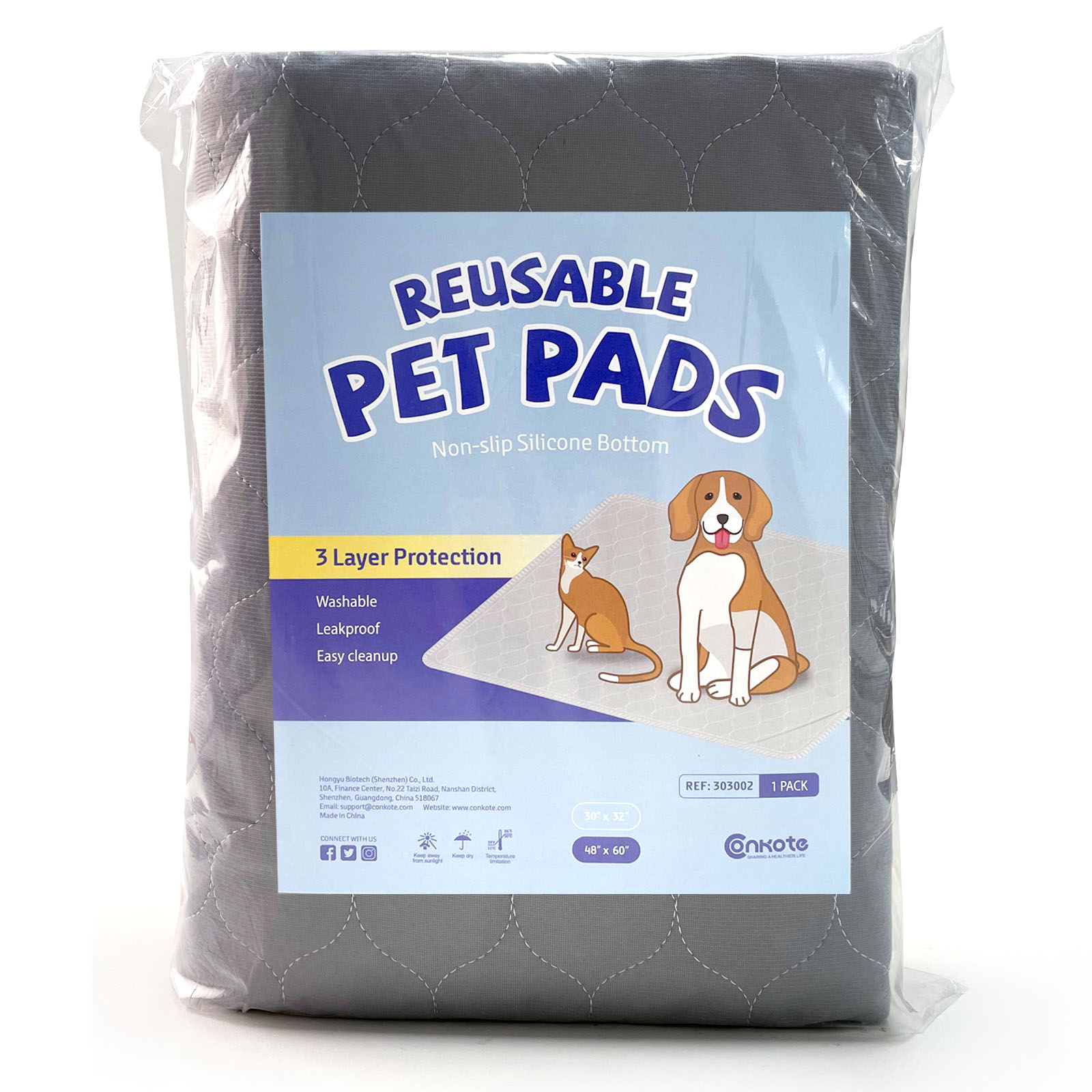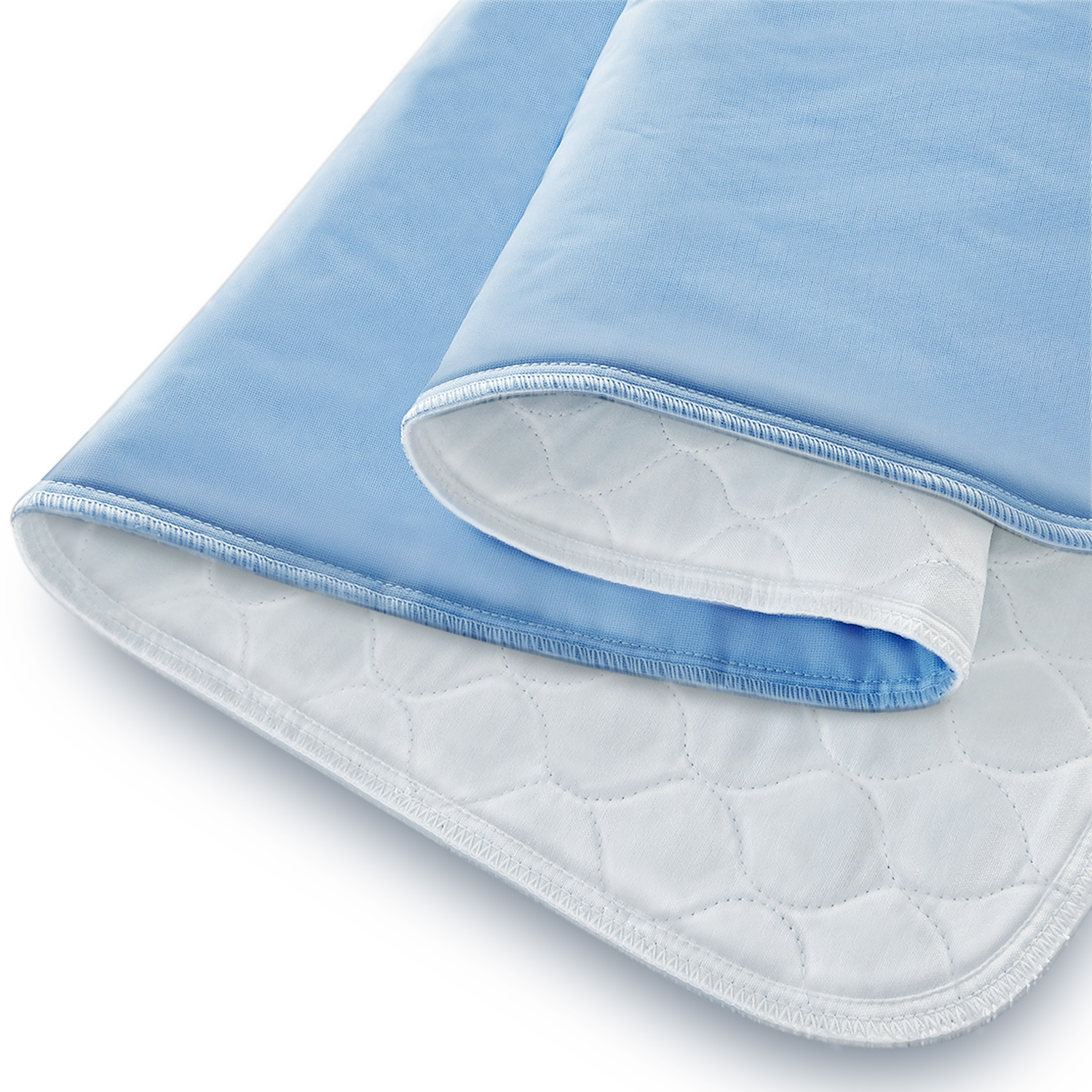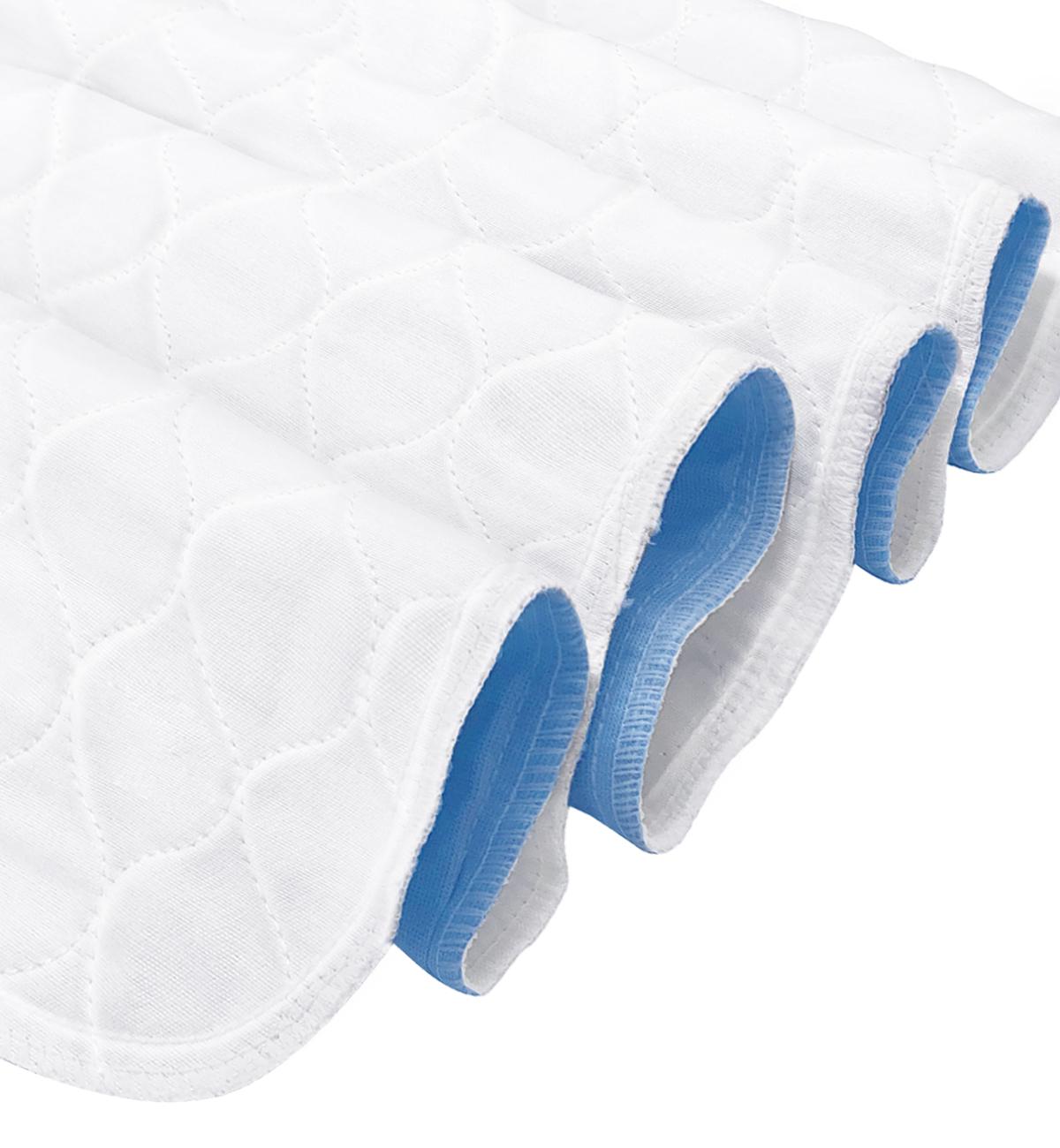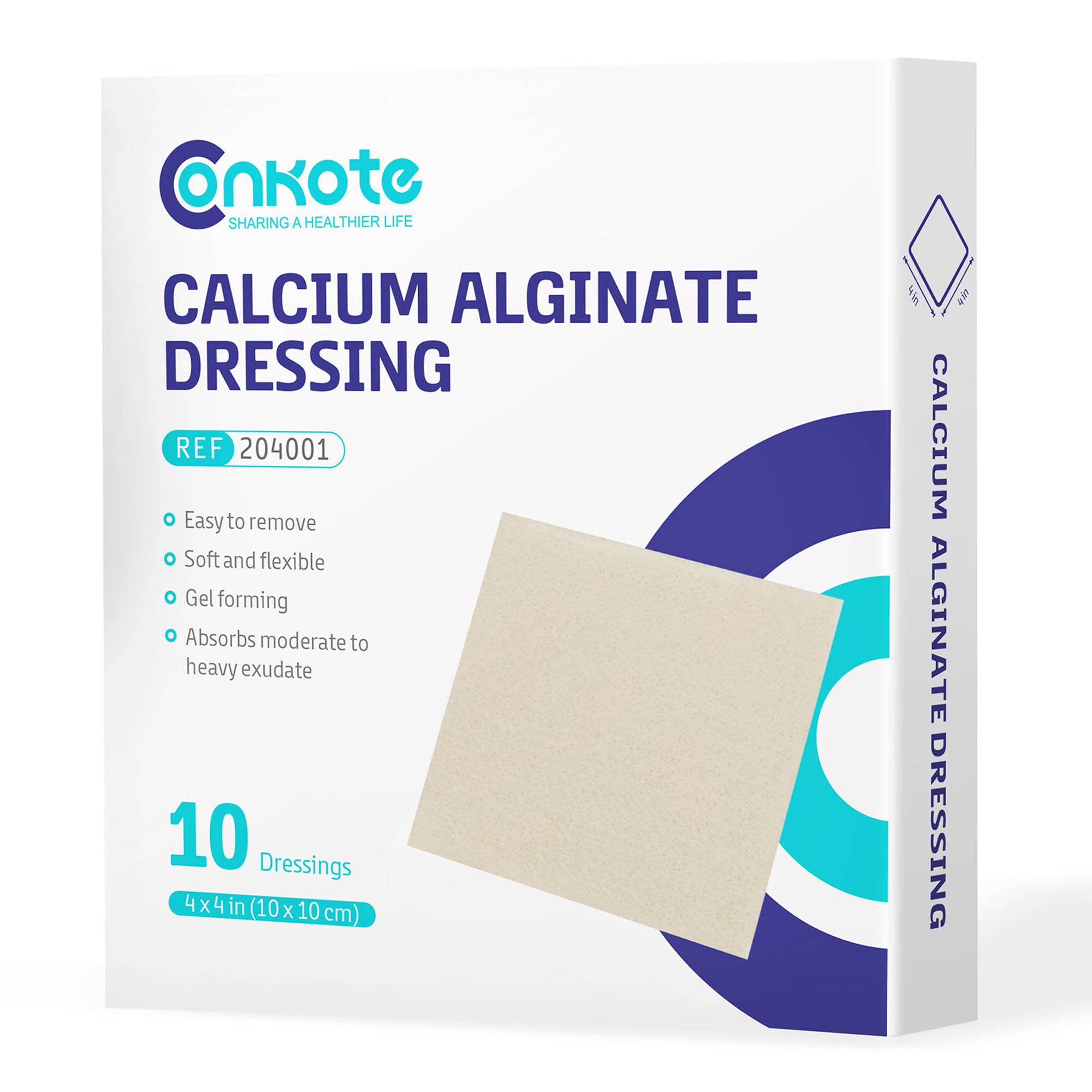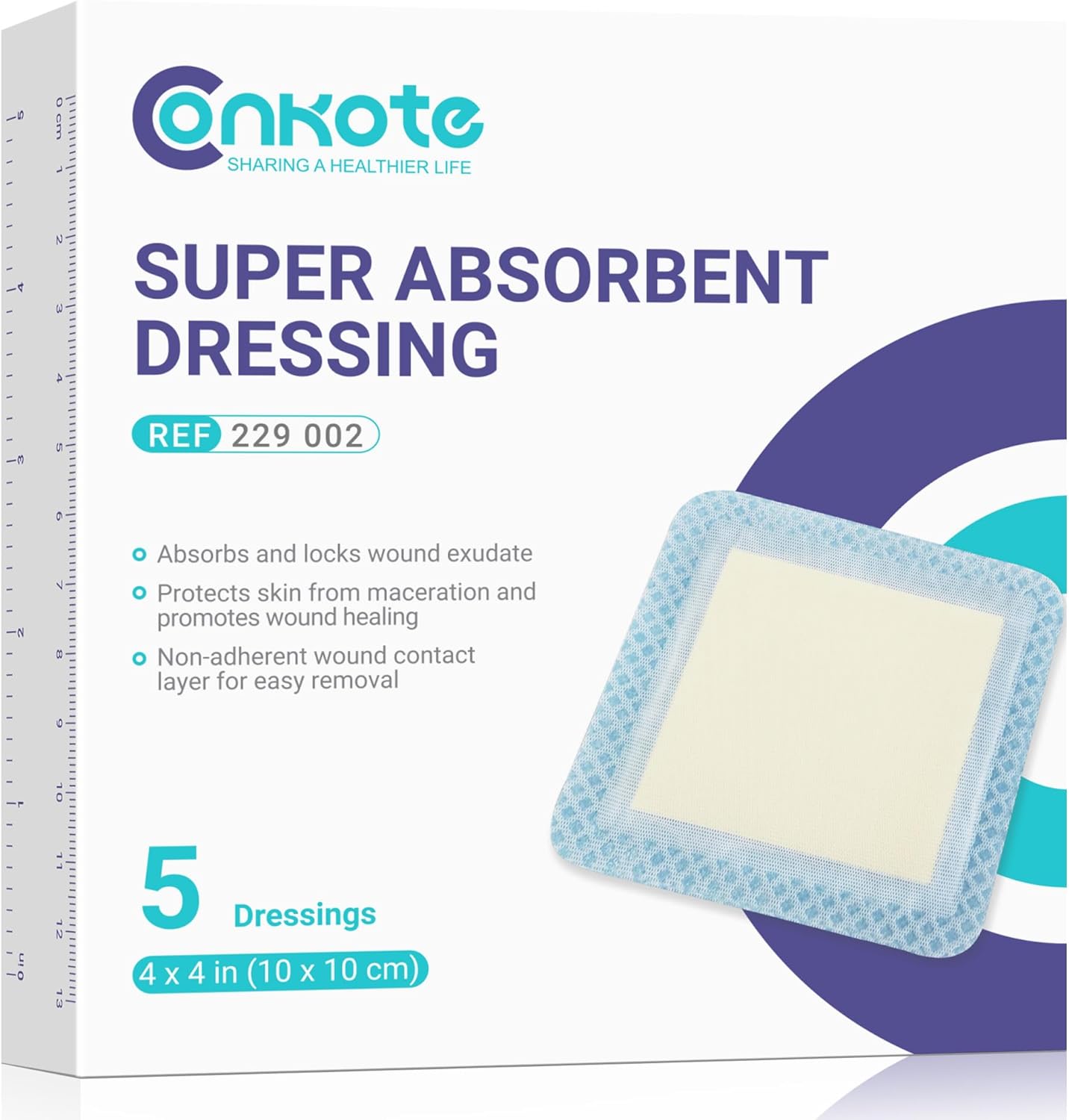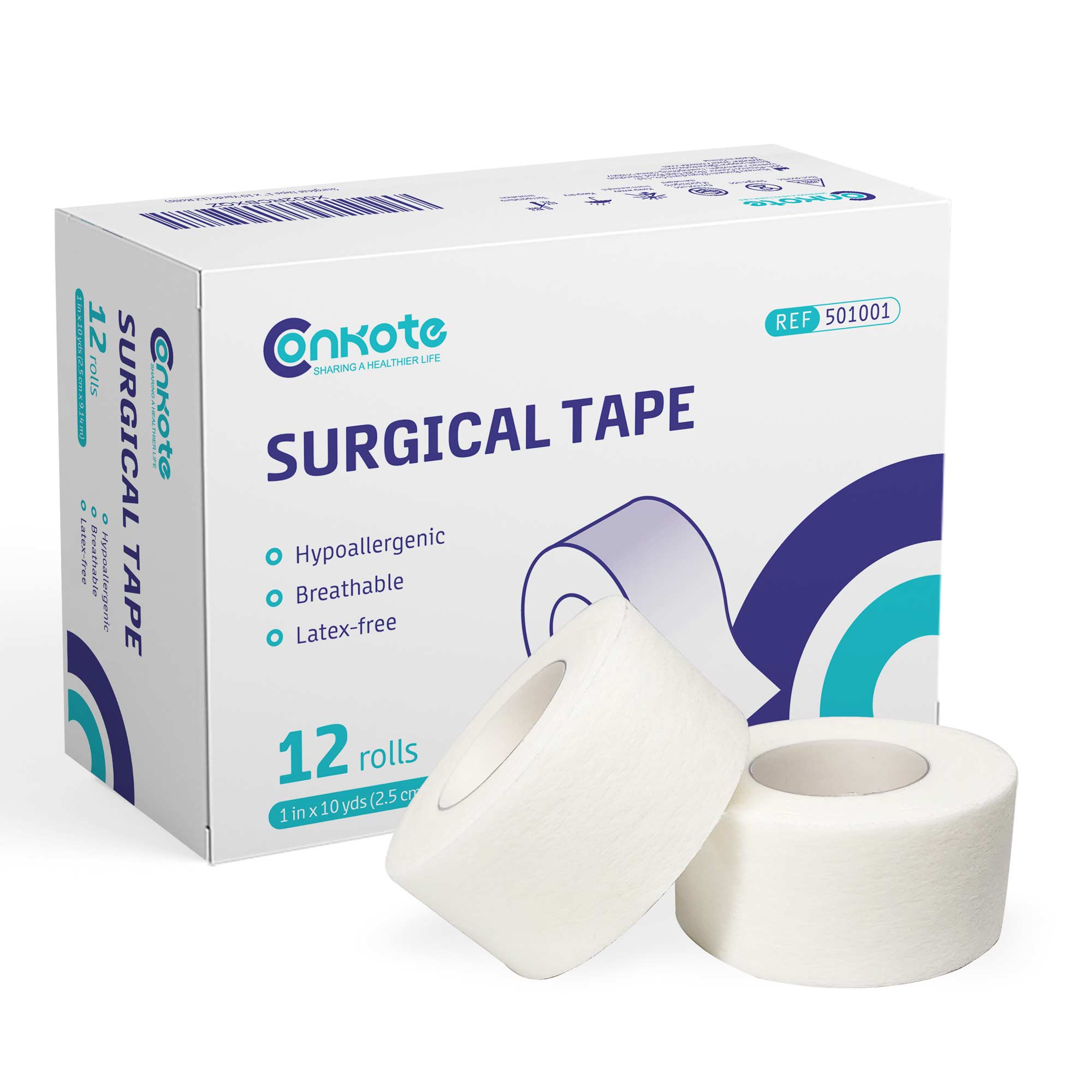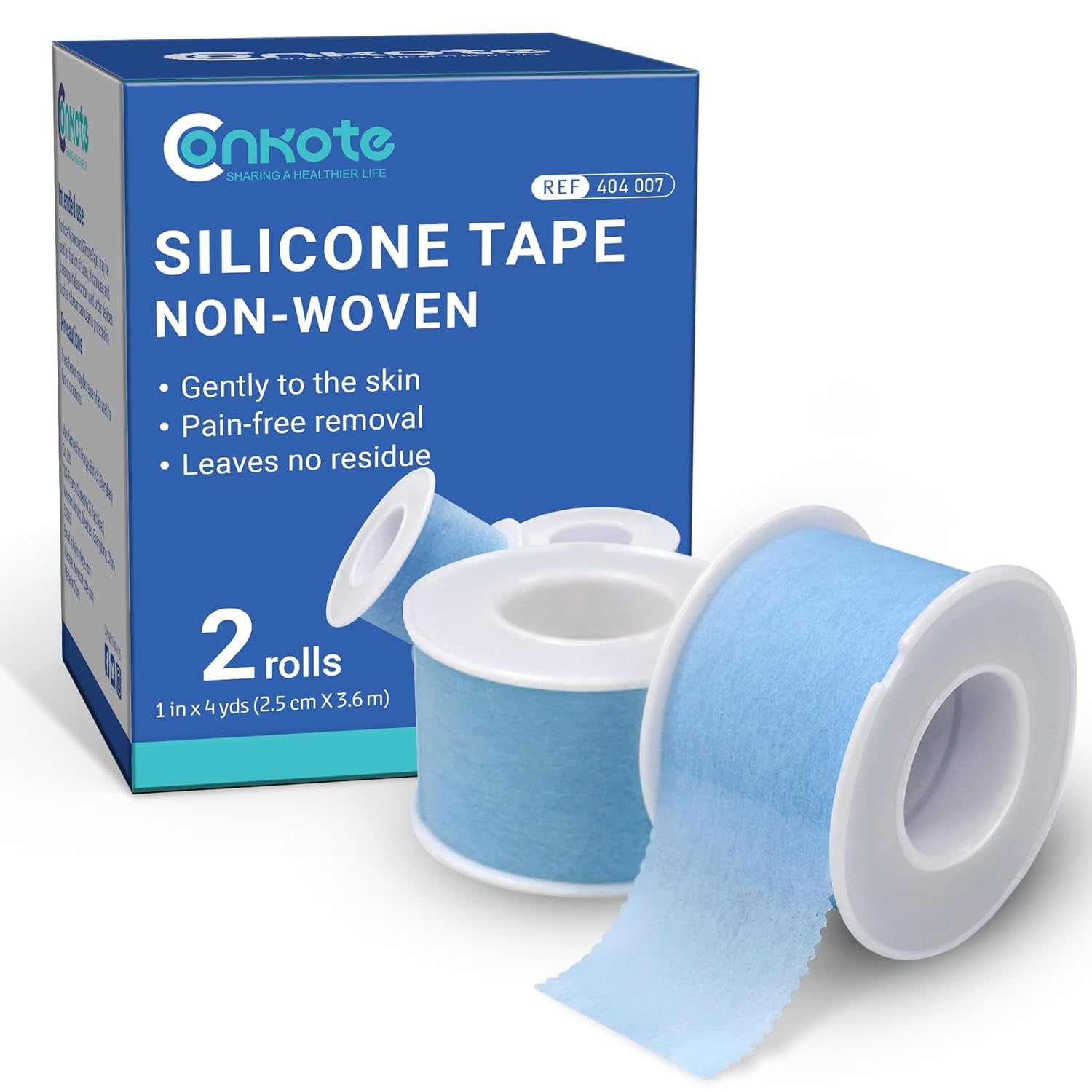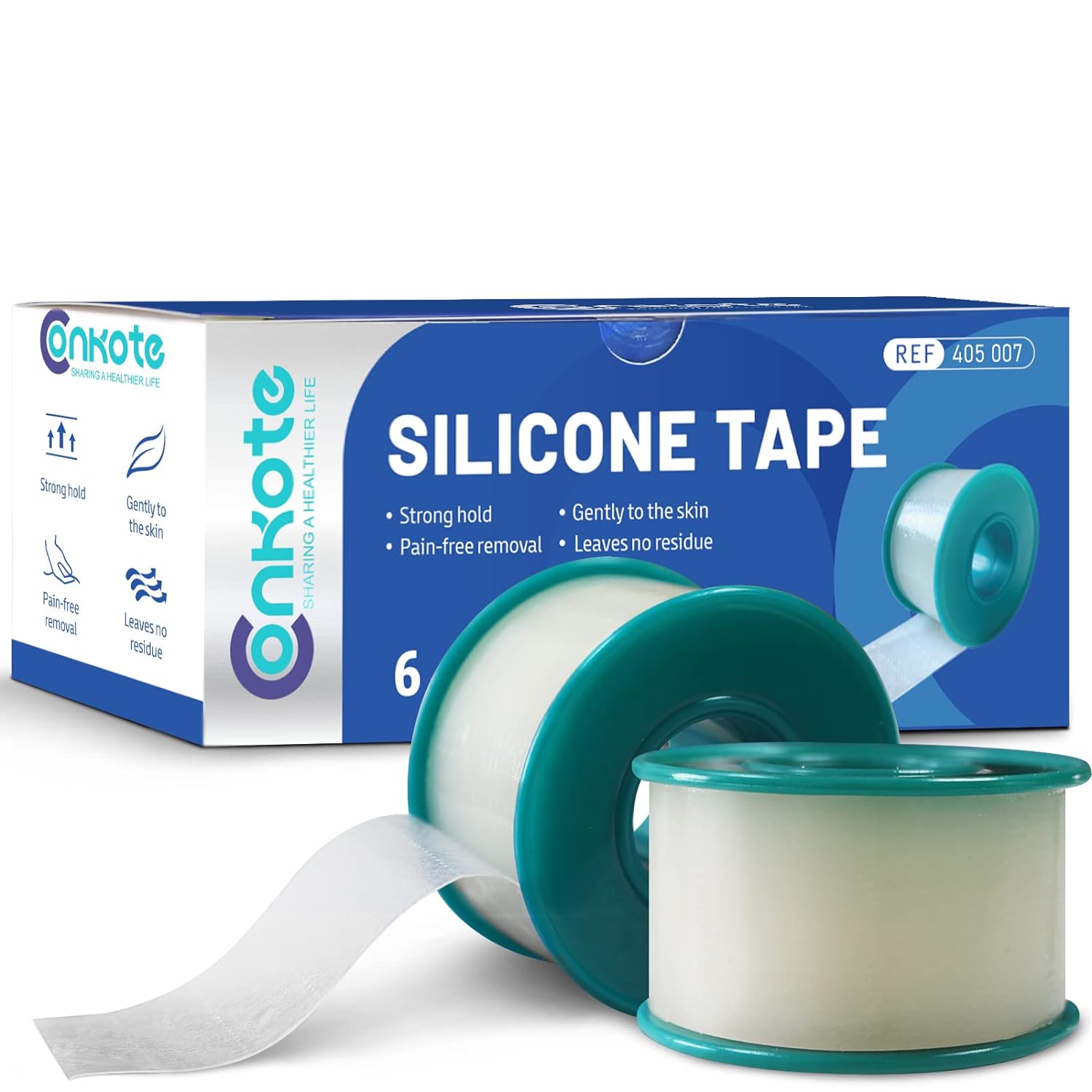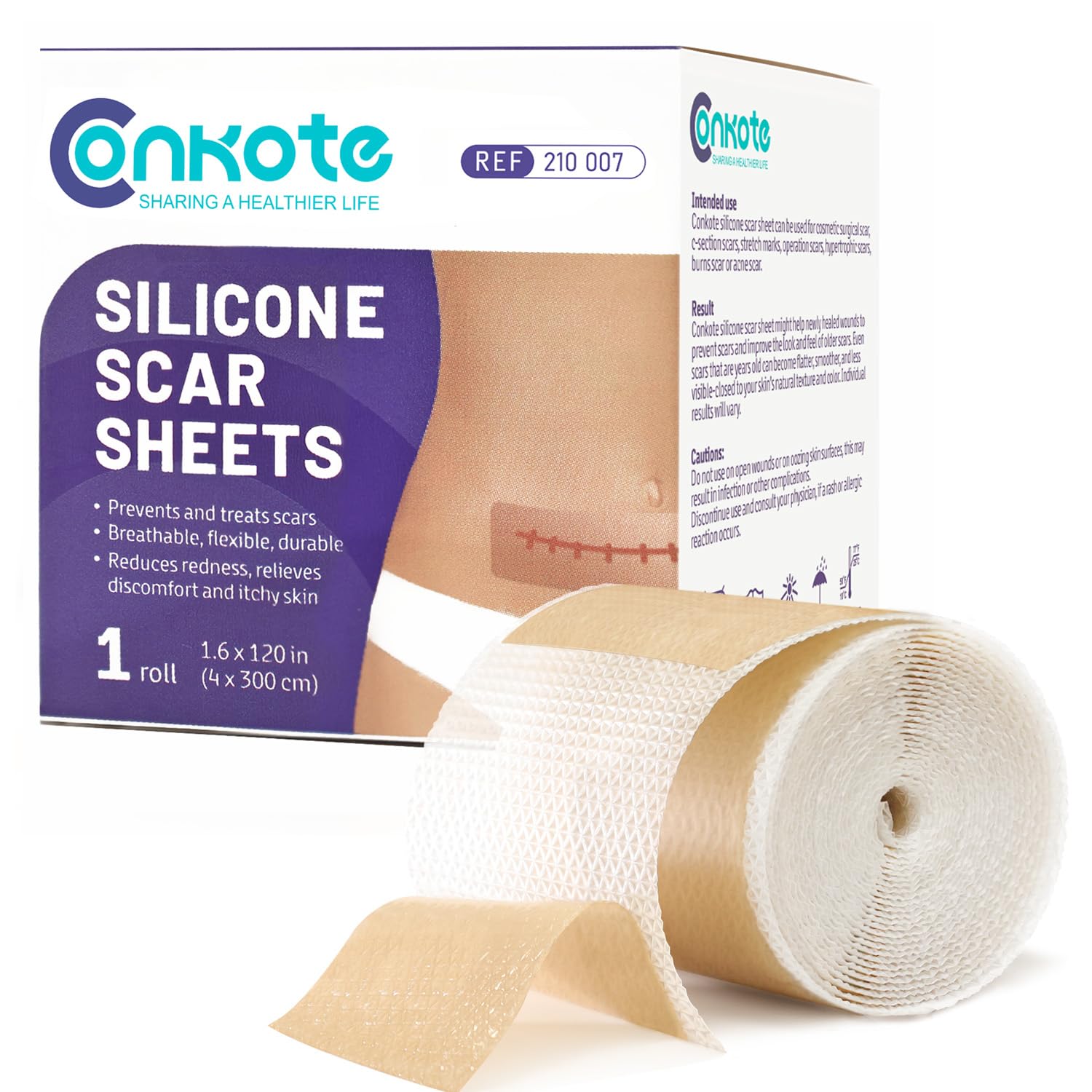What is Negative Pressure Wound Therapy?
2022-08-17 2022-09-19 12:01What is Negative Pressure Wound Therapy?
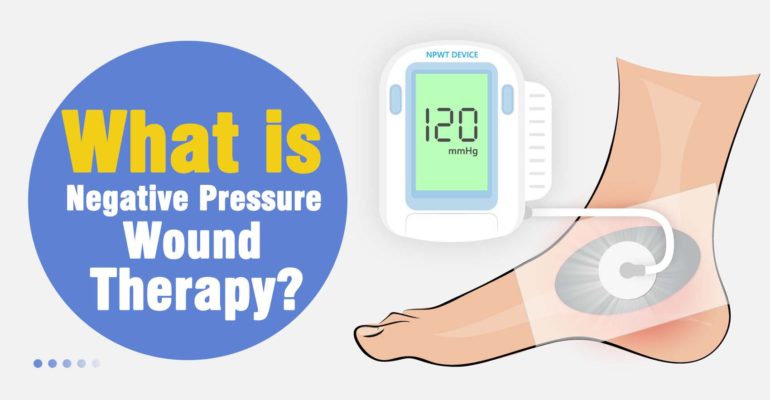
What is Negative Pressure Wound Therapy?
Negative pressure wound therapy (NPWT) is a method of drawing out fluid and infection from a wound to help it heal. NPWT can be used on both chronic and acute wounds. A special dressing (bandage) is sealed over the wound and a gentle vacuum pump is attached. In some cases, NPWT can even help to close a wound that has not healed with other treatments. If you are considering NPWT for your wound, talk to your doctor to see if it is the right treatment for you.
What wound devices can be used with negative pressure wound therapy?
There are now several commercially available systems for negative-pressure wound therapy and multiple dressing options engineered for specific wound applications.
Mains-operated systems are available for patients with limited mobility or heavily exuding wounds. Lightweight, battery-powered units have a smaller canister volume suitable for an ambulatory patient with a wound that has minimal to moderate levels of exudate. Units can be programmed to provide varying degrees of pressure either continuously or intermittently.
During the procedure:
- A foam dressing is cut to the approximate size of the wound with scissors and placed gently over the wound.
- A drain tube is placed over the foam.
- The foam dressing, together with the first few inches of the drainage tube and the surrounding area of healthy skin, is covered with adhesive transparent tape.
- The distalend of the drain is connected to the negative-pressure unit, which is programmed to produce the required level of pressure.
- Once the unit is switched on, the air is sucked out of the foam dressing causing it to collapse inwards, drawing in the edges of the wound with it.
- The fluid within the wound is taken up by the foam and transported into a disposable canister within the main negative-pressure unit.
Negative-pressure wound therapy dressings should be changed every 48 hours. If there is infection the dressing should be changed every 24 hours. It may be possible to leave the dressing on for longer periods if the wound is not infected. Depending on the type of wound, negative pressure wound therapy may be needed for 2–6 weeks.
How does negative pressure wound therapy promote wound healing?
The vacuum pump creates a negative pressure environment that helps to encourage the formation of new blood vessels and promotes the growth of new tissue. NPWT also helps to keep the wound clean and free from infection.
NPWT is often used on wounds that are slow to heal, such as pressure ulcers, diabetic ulcers, and surgical wounds. It can also be used on burns and traumatic wounds. NPWT is typically used for 7-14 days, depending on the type and severity of the wound.
There are many benefits of NPWT, including accelerated healing, reduced pain, reduced swelling, and reduced risk of infection. NPWT is a safe and effective treatment for many types of wounds.
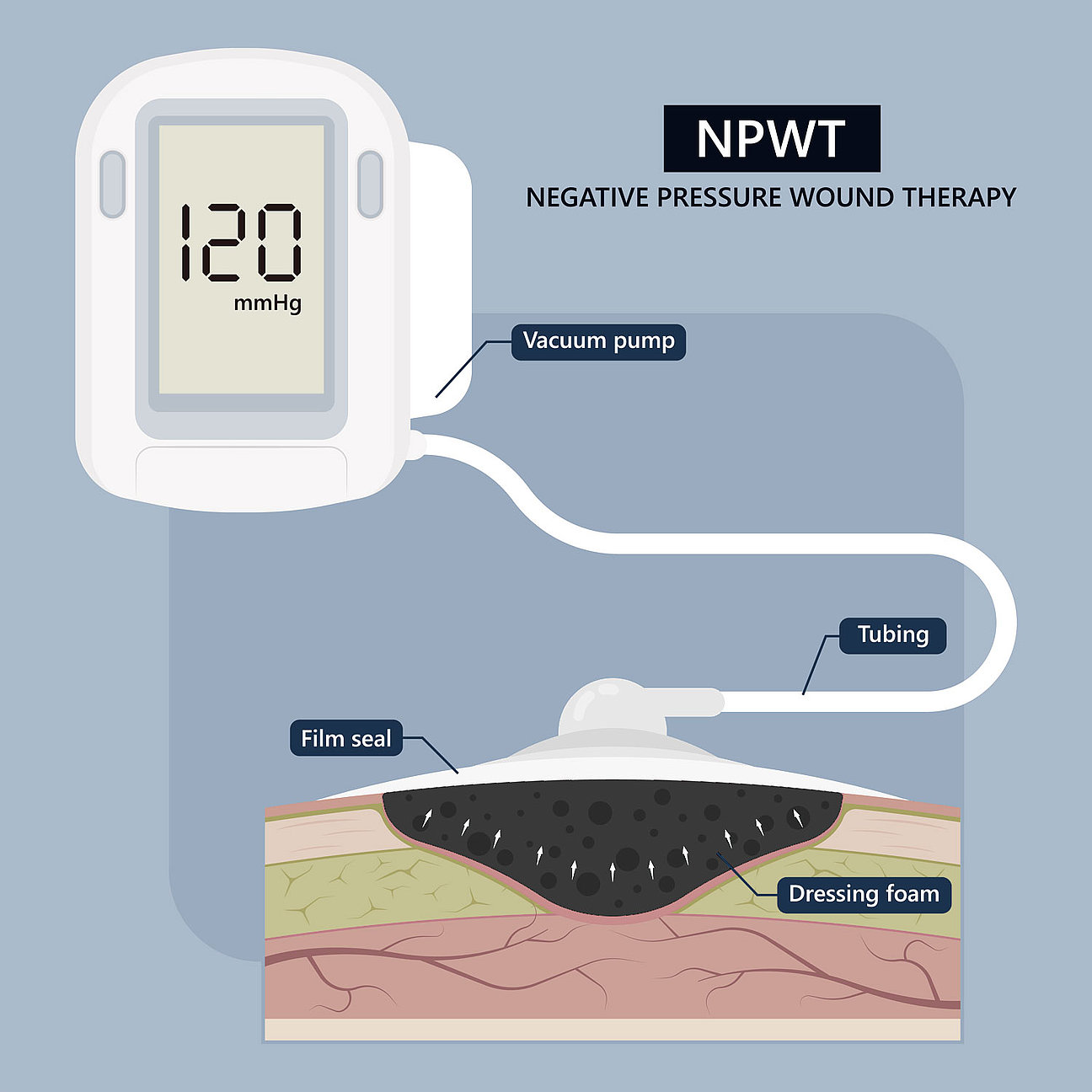
When is negative-pressure wound therapy appropriate?
The main reasons for using a mains-powered negative-pressure wound therapy unit are:
- Acute surgical and traumatic wounds
- Subacute and dehisced wounds
- Pressure ulcers
- Chronic and open wounds (e.g., venous stasis ulcers and diabetic foot ulcers)
- Meshed grafts, to secure the graft in place and/or to accelerate the epithelialisation of the donor site
- An adjunct to skin grafts/flap procedures.
A battery-powered ambulant negative-pressure unit is recommended for:
- Venous stasis ulcers
- Lower extremity ulcers
- Pressure ulcers
- Lower extremity flaps
- Dehisced incisions i.e. a condition where the wound has a premature opening or splitting along natural or surgical suture lines due to improper healing
What are the benefits of negative pressure wound therapy ?
Negative pressure wound therapy has the potential to be a cost-effective treatment option to help treat various types of wounds. Potential benefits include:
- Decreased swelling and inflammation
- Decreased risk of bacterial infection
- Increased blood flow to the wound
- Decreased overall discomfort
- Less changing of wound dressings compared with other treatments
- Gentle pulling together of the wound’s edges
What are the disadvantages of negative pressure wound therapy?
The disadvantages of this form of wound treatment include:
- Need to be hooked up to the unit for at least 22 hours a day
- Initial pain, due to the application of negative pressure.
Negative-pressure wound therapy is not always effective and a non-healing wound may require other potentially more invasive treatment.
Conclusion
NPWT is a useful and effective wound treatment that can be applied in both the community and hospital setting. Collaborative working between acute and primary care can ensure a seamless care pathway for patients who will benefit from this therapy. However, there are risks associated with NPWT. If you are considering NPWT for your wound, talk to your doctor to see if it is the right treatment for you.
Search by Tags
advanced woundcare dressing Bedsores Blood Blood donation chronic decrease Chronic Wound comprehensive guide Conkosil Diabetes diabetes foot diabetes prevention Diabetes,Foot Problems,wound Diabetic foot dog training donation dor pee pads Easy Tips First aid health health life Home Care Ionic Silver Dressin Innovative Technology for Wound Care Lesions Measure a Wound medical tape Moist Wound Healing Negative pressure wound therapy papertape pet care Pressure Ulcers puppy pee pads Self-Adhesive Bandage Skin care tape Tobacco traditional wound care dressing World No Tobacco Day Wound care wound dressing wound healing wound infection wound materials woundmaterials wound type wound vac
